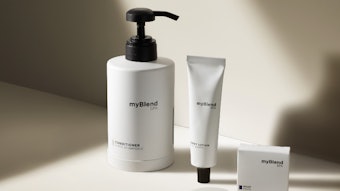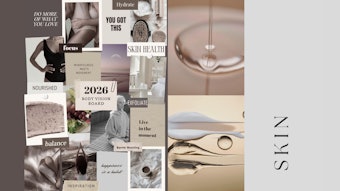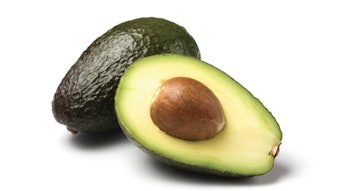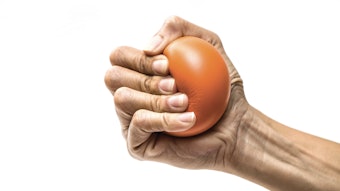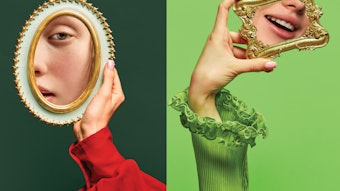
SpaFinder has revealed its list of the decade's top 10 spa industry trends, singling out advancements in treatments, products and business models.
While SpaFinder has been forecasting annual spa trends for many years, 2010 represents the first time the company has spotlighted the top 10 spa trends for an entire decade. And what a decade it’s been. From organic to indigenous, from social spa-ing to the online spa scene, the spa category was radically transformed and expanded from 2000 to 2010, as the industry met global challenges with unprecedented innovations that will positively impact the spa industry for years to come.
SpaFinder's list of the decade’s ‘Top 10’ includes previously analyzed trends that have proven to be the most enduring and resonant. However, the company also challenged its team of experts to consider trends not previously selected for the company’s yearly top 10 lists—those that weren’t as evident at the time, yet in retrospect proved a real game-changer. A biggie: the rise of the spa gift market, and the explosion globally of gift certificates, cards and vouchers.
Top 10 spa trends of the decade
1. Indigenous Treatments. While one would see the use of local ingredients and local customs on occasion at spas decades ago, during the past decade this became an almost unspoken rule. Culturally grounded ingredients, treatments and customs deliver that healthy native flavor, and they also represent the unearthing of special, often centuries-old experiences that could not be easily replicated. From a lomi lomi massage in Hawaii, to the Royal Javanese Lular wedding ritual from Indonesia, indigenous treatments gave spas a grounded sense of place that has made each spa-going experience around the world truly unique.
2. Medicine and Spa. In the early 90s, there was very little overlap between medicine and spas. That has changed dramatically in the last 10 years. More doctors have discovered that spa approaches contribute to health and wellness, specifically by targeting stress. The forces driving this integration are diverse, but, basically, the spa and medical worlds began talking. Then, when Botox arrived in 2002, a new type of aesthetic/medical spa was born and the spa and medicine connection was solidified. Spas also got their act together, becoming more transparently health- oriented, and downplaying the ‘woo woo’ factor.
3. Organic. This was the headline story in spa products for the decade. The popularity of all things green helped several obscure organic lines make it big, and nearly all spa product companies launched their own branded organic lines. The organic product trend also helped open the door for a more far-reaching eco-friendly, environmentally conscious zeitgeist throughout the spa arena—from spa building and design to cuisine. And while it's not yet garnering universal praise, at least it’s gotten things going in the right direction.
4. Men. While the decade saw a range of new demographics rush into the spa arena—from teens to pre-teens to babies and seniors—it was the steady stream of men making spa-going a regular part of their lives that’s had the most profound impact. While it took some doing to get men to try a spa for the first time, this ‘first time,’ typically, resulted in a second and third and so on. Men discovered there was more to this ‘spa thing’ than just idle pampering: it was, in fact, the quickest way for them to reduce stress, and it helped improve their sports performance. As spas with a traditionally female pampering and beauty emphasis were joined by those emphasizing male grooming, and the industry began to focus more on health and wellness, millions of men began to comfortably, eagerly hit the spa.
5. Wellness. The word ‘wellness’ was hardly used in the 90s, not really appearing on the scene until after the millennium. A term that has its origins in Europe (combining the concepts of ‘fitness’ and ‘well-being’), it gained momentum there as a positive alternative terminology. Because in Europe the word ‘spa’ had narrower connotations: either water treatments for sick older people, or, with the emergence of some newer spas like the swanky Brenner’s Park Hotel and Spa in Baden Baden, an association with expense and luxury. Because the word wellness was such an apt word to describe places that offered fitness, massage, alternative medicine and healthy nutrition—increasingly the core mission of spas—the terms, understandably, have become tightly interwoven.
6. Spa Comes Home. The influence of spas on the home has its humble beginnings at the start of the decade, with spa-inspired consumers, say, purchasing a candle to use in the bath, or maybe a loofah sponge. In the years since, it’s blossomed into a booming industry of spa products, design, furniture, home amenities, and even clothing and cuisine. The trend reached its most bold expression with the birth of ‘spa living real estate,’ where consumers could actually live at the spa, purchasing residences with spectacular spa/wellness offerings in new luxury high-rises or special communities. SpaFinder has not only seen spa-ing burst the confines of its traditional walls, but a new term, ‘spa lifestyle,’ has emerged to describe a whole healthier way of living, thinking and being.
7. Yin of Luxury, Yang of Discount. While the last few tough economic years have put more industry emphasis on the ‘yang’ of discount, the wider spa decade definitely spent quite a bit of time on the ‘yin’ of luxury. The reality is, that with more than 80,000 spas across the world now, there’s plenty of yin and plenty of yang to go around. In almost every country across the globe consumers can find bargain-priced spas/treatments right alongside sky-high-priced options. As spa-going has become totally mainstream, there’s a spa now to suit every taste and budget.
8. Online Spa. At the turn of the millennium, there were many spas that didn’t even have Web sites. Today, almost every spa—and even therapists and practitioners—have their own URL. But that’s just the beginning of the spa.com revolution: today consumers can search spas, book spa appointments in real-time, buy spa products, review spas and fully engage in new forms of spa-related social networking, all online. And with the Internet so well matched for wellness coaching, and new technology enabling medical diagnosis and virtual health records, unprecedented aspects of the spa/wellness experience are becoming available through the Internet. Only the therapists’ hands haven’t been brought online—yet.
9. Social Spa-ing. Spas traditionally put their emphasis on the pillars of exercise, nutrition and body and beauty treatments, while the social aspects of spa-going, which existed all along, haven’t garnered much attention—until recently. Now we know that social spa-ing (just like spa programs for sleep or brain health) is a recognized contributor to health and natural de-stressing. From the isolation of the massage therapy room and the whisper-only relaxation lounges has come the recognition that spas are not only natural community hubs, but that mingling and socializing are an important part of getting healthy too.
10. Gift Certificates, Vouchers and Cards. Lastly, a development that evolved so gradually it never made any of SpaFinder’s annual trends lists. And yet it probably has had more to do with the explosion of spas and spa-goers around the world than any other trend. The emergence and popularity of the spa gift certificate, card and voucher has introduced so many new people to the spa experience. In fact, research shows that approximately one-third of all spa visits are generated by the redemption of certificates and vouchers. Spa gifting has been galvanized by their near-universal availability at almost every individual spa and via third-party programs, and they’ve not only given people permission to pamper themselves, they’ve ushered in a new era where gifting ‘spa’ represents an expression of true thoughtfulness and care.



